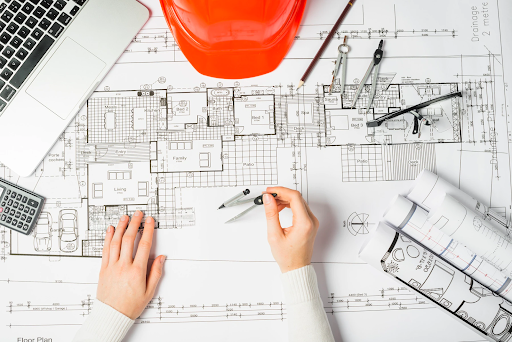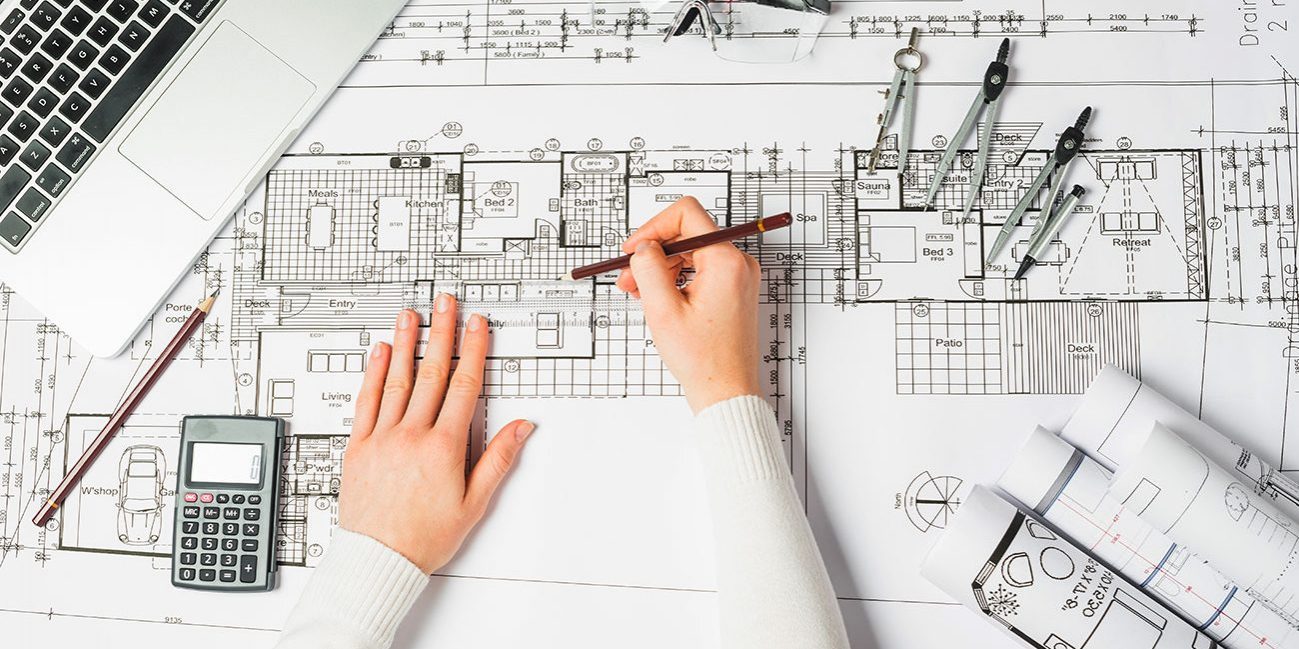Architect Collaboration Tips for Working with Contractors and Builders
Architect Collaboration Tips for Working with Contractors and Builders
Blog Article
Recognizing the Diverse Occupation Paths Available for Aspiring Architect
As an ambitious Architect, you have a globe of occupation paths awaiting you. Each path offers one-of-a-kind obstacles and chances to apply your imagination and technological expertise. Whether you're drawn to standard architecture or the nuances of lasting design, there's a niche that aligns with your interests. Understanding these diverse alternatives can shape your professional trip, yet which instructions will you select to explore first?
Typical Style: Designing Frameworks and structures
Standard design concentrates on developing buildings and structures that mix capability with visual allure. As you explore this field, you'll appreciate the elaborate balance between type and function. You'll discover to attract ideas from historical styles, incorporating aspects like balance, materials, and craftsmanship. Your layouts can reflect social heritage, showcasing regional practices while fulfilling contemporary needs.
You'll develop skills in composing, model-making, and website evaluation, permitting you to envision and connect your ideas successfully. Engaging with clients, you'll require to recognize their vision and equate it right into possible layouts.
Moreover, developing codes and sustainability practices are important in your job, guaranteeing your structures are environmentally pleasant and risk-free. As you grow in your career, you'll locate chances in household, business, and even repair jobs, each offering special difficulties. Embracing typical design leads the way for a fulfilling job that pays tribute to the past while shaping the future.
Urban Planning: Shaping Communities and Public Spaces
As an aspiring Architect, you can play an essential duty as a metropolitan planner, transforming exactly how neighborhoods engage and work. By employing community engagement approaches, you'll assure that homeowners have a voice in shaping their atmosphere. Plus, integrating lasting layout principles will help create rooms that not only fulfill today's requirements but also secure the future.
Duty of Urban Planners
While many could assume of architects as the single visionaries behind structures, city organizers play a vital function in shaping the more comprehensive landscape of areas and public rooms. By working together with numerous stakeholders, you'll help create parks, transport systems, and household locations that promote social interaction and access. Your experience in spatial layout and area dynamics enables you to visualize future development while preserving cultural heritage.
Area Interaction Methods
Efficient community involvement methods are important for urban coordinators to guarantee that the voices of homeowners are listened to and valued in the planning procedure. To promote meaningful discussion, you must prioritize open discussion forums and workshops where area participants can express their concepts and issues. Usage surveys and social media to get to a wider target market, making sure varied point of views are included. Working together with local companies can improve depend on and assist in much deeper connections. It is necessary to provide clear details regarding proposed tasks and decision-making processes, permitting locals to feel informed and empowered. By proactively including and paying attention feedback, you'll create rooms that reflect the area's requirements, eventually bring about even more sustainable and effective metropolitan atmospheres. Welcome transparency and constant discussion for lasting effect.
Lasting Layout Principles
When developing urban rooms, including lasting design concepts is critical for producing environments that grow both environmentally and socially. Consider incorporating eco-friendly spaces, like parks and yards, to boost biodiversity and enhance air high quality.
Creating with water conservation in mind is also crucial-- consider rain yards and permeable surface areas to handle stormwater. Entailing neighborhood members throughout the planning procedure guarantees that the areas you create fulfill their needs and urge social interaction. By welcoming these concepts, you'll add to vivid, sustainable city landscapes that benefit every person.

Landscape Style: Creating Lasting Outside Atmospheres
As you explore landscape style, you'll find vital design concepts that produce useful and gorgeous exterior rooms. Lasting techniques play a vital duty in making certain these environments thrive while minimizing ecological impact. And also, you'll discover a selection of occupation opportunities that permit you to make a genuine difference in exactly how people communicate with nature.
Style Principles in Landscape
Understanding style concepts in landscape style is necessary for creating lasting outdoor atmospheres that integrate with nature. You'll need to consider elements like percentage, balance, and scale to ensure your layouts feel cohesive and welcoming. Incorporating native plants not just boosts biodiversity but likewise lowers water use, making your landscape resilient. Consider the flow of area and just how people communicate with it; paths and seating locations ought to welcome expedition and leisure. Additionally, focus on seasonal adjustments, creating with products that complement the environments year-round (Architect). By prioritizing sustainability and looks, you can create outdoor rooms that improve the community and promote wellness. Welcoming these concepts will certainly establish a solid structure for your career in landscape architecture.
Sustainable Practices Summary
Lasting techniques in landscape architecture not only concentrate on appearances but likewise focus on ecological health and wellness and source preservation. You can make areas that advertise dirt health, such as utilizing natural products and exercising permaculture concepts. Inevitably, these techniques assure your designs benefit both people and the atmosphere for years to come.
Occupation Opportunities Expedition
With a strong structure in lasting methods, landscape architecture offers a selection of occupation paths that enable you to make a significant impact on the setting. Urban coordinators typically team up with landscape architects to develop green rooms in metropolitan setups, improving city livability. If you're passionate concerning education, take into consideration ending up being a landscape style educator, motivating future my site generations.
Sustainable Layout: Focusing on Eco-Friendly Practices
As you discover your profession in style, accepting environmentally friendly techniques can set you apart in an affordable field. Lasting layout concentrates on developing buildings that lessen environmental effect while boosting resident health. By integrating eco-friendly materials, energy-efficient systems, and sustainable structure techniques, you'll add to a greener future.
Start by acquiring expertise of green qualifications like blog here LEED or BREEAM, which can reinforce your qualifications. Consider just how all-natural light, air flow, and thermal efficiency can maximize style. Team up with engineers and ecological consultants to innovate options that lower waste and conserve resources.
Don't fail to remember the relevance of community involvement-- appealing neighborhood stakeholders can motivate designs that harmonize with the atmosphere. As customers increasingly prioritize sustainability, your experience in environmentally friendly techniques will certainly not just draw in tasks yet additionally fulfill your passion for responsible architecture. Embrace this essential element of the occupation, and view your profession thrive.
Historic Preservation: Shielding and Bring Back Social Heritage
While you begin on your architectural journey, consider the essential role of historical conservation in preserving our cultural heritage. This field concentrates on the defense and reconstruction of substantial structures, sites, and structures that inform the tales of our past. By participating in historic preservation, you'll help guard the building tradition that shapes community identification.
As a historic preservation Architect, you'll evaluate historical relevance and examine the condition of frameworks. You'll work closely with chroniclers and preservationists to assure authentic restoration strategies are utilized. This career course allows you to mix creative thinking with research study, enabling you to make options that respect initial materials and craftsmanship.
Your job not only adds to sustainability by reusing existing buildings yet also fosters a feeling of satisfaction within neighborhoods. Embracing this course will assist you become a guardian of background, protecting the stories and aesthetic appeals that enrich our lives.
Inside Architecture: Enhancing Indoor Spaces
Historic conservation and interior architecture both share a dedication to boosting the developed setting, however they concentrate on various facets. While historical preservation stresses maintaining a structure's cultural and historic value, interior design nos in on maximizing interior spaces for performance and aesthetics.
As an aspiring Architect, you'll discover that indoor style permits you to blend creativity with from this source technical skills. You'll create rooms that not just look excellent but also promote comfort and effectiveness. This area entails recognizing just how light, color, and materials communicate within an area, influencing state of mind and use.
You'll service numerous tasks, from residential homes to commercial offices, making sure that each setting fulfills the demands of its occupants. By prioritizing user experience, you can transform interiors right into motivating and useful rooms, making a substantial effect on just how individuals engage with their surroundings. Embrace the opportunity to enhance interior settings and form the method people function and live.
Industrial Layout: Combining Performance With Looks
Commercial design plays an important role in developing items that effortlessly blend aesthetics with capability, making sure that what you utilize daily is not just visually enticing however also sensible. As a hopeful Architect, you might immerse on your own in this field, concentrating on creating every little thing from furniture to customer electronic devices. Your job includes understanding customer requirements, products, and producing procedures, enabling you to develop ingenious solutions that improve everyday experiences.
In commercial design, you'll usually work together with designers, marketing experts, and producers, making certain that your designs are not only attractive but likewise viable. You'll discover to balance type and feature, focusing on usability without compromising design. By sharpening your skills in sketching, 3D modeling, and prototyping, you'll be fully equipped to bring your concepts to life. This job course offers a dynamic atmosphere where imagination fulfills usefulness, making it a rewarding choice for engineers curious about forming the items of tomorrow.
Regularly Asked Concerns
What Educational Credentials Do I Need to Come To Be a Designer?
To become an engineer, you'll require a professional level in design, generally a Bachelor's or Master's. Additionally, you'll need to complete a teaching fellowship and pass the Architect Enrollment Assessment to practice legitimately.
Are There Qualification Needs for Different Building Profession Paths?
Yes, there're certification needs for various building paths. Architect. You'll require to pass exams, full internships, and occasionally go after specialized training, relying on your selected emphasis, like landscape architecture, city design, or historical preservation
What Software Application Skills Are Necessary for Architects Today?

How Can I Gain Practical Experience While Researching Design?
You can gain functional experience by interning at architectural companies, taking part in design competitors, volunteering for area jobs, or teaming up with classmates on real-world assignments. These possibilities enhance your abilities and develop beneficial links in the sector.
What Job Opportunities Exist Outdoors Conventional Style Firms?
You can explore numerous job chances outside conventional design companies, like urban preparation, interior decoration, landscape style, building monitoring, property growth, or perhaps functions in sustainability consulting. Each deals unique challenges and incentives.
Whether you're attracted to conventional design or the subtleties of sustainable design, there's a particular niche that aligns with your rate of interests.When making urban spaces, integrating lasting layout concepts is important for developing settings that thrive both ecologically and socially.As you check out landscape style, you'll discover necessary layout principles that develop gorgeous and useful outside rooms.Recognizing design concepts in landscape style is essential for producing lasting exterior environments that balance with nature.In commercial layout, you'll commonly collaborate with engineers, marketing professionals, and manufacturers, ensuring that your styles are not just beautiful but also viable.
Report this page